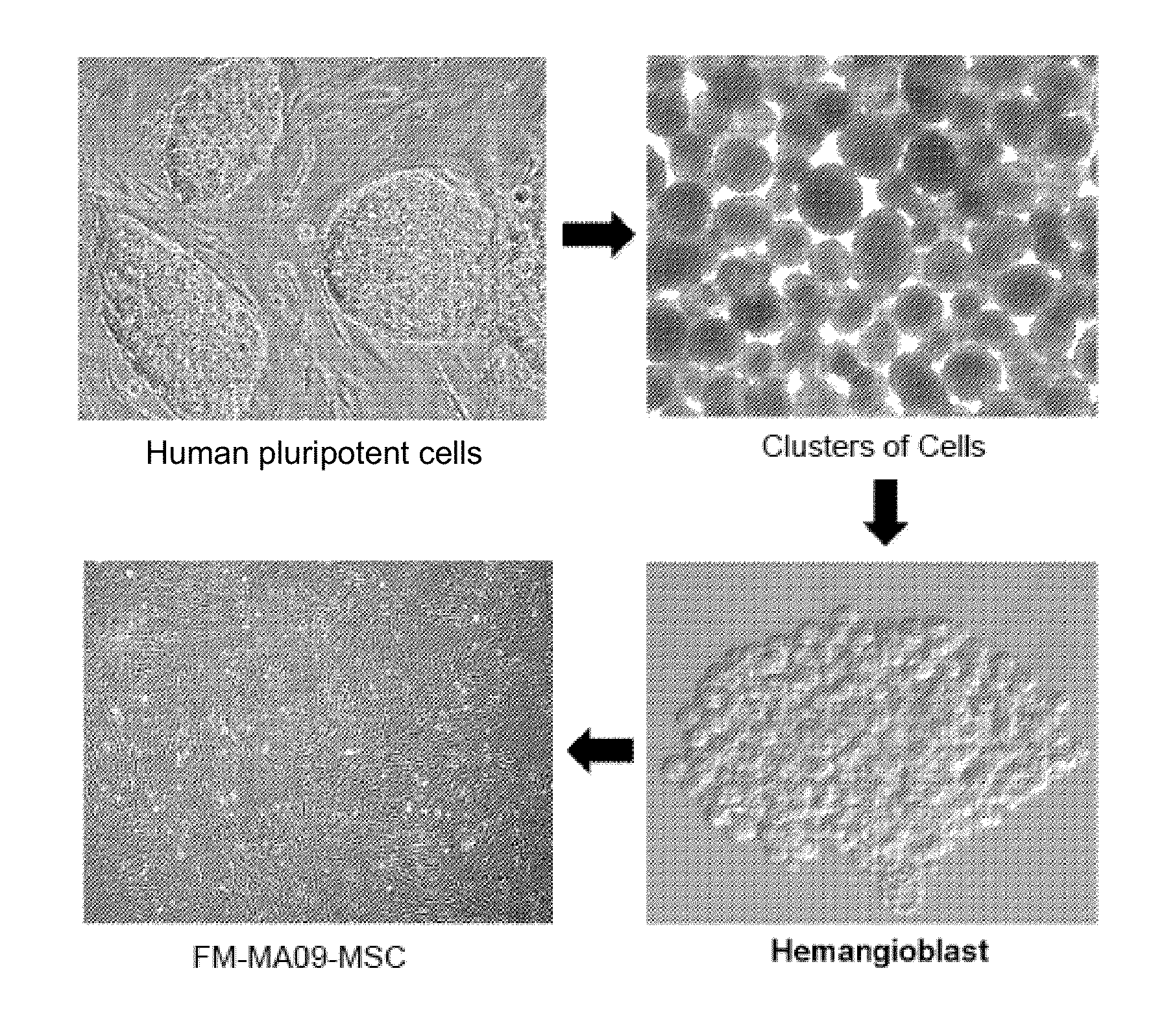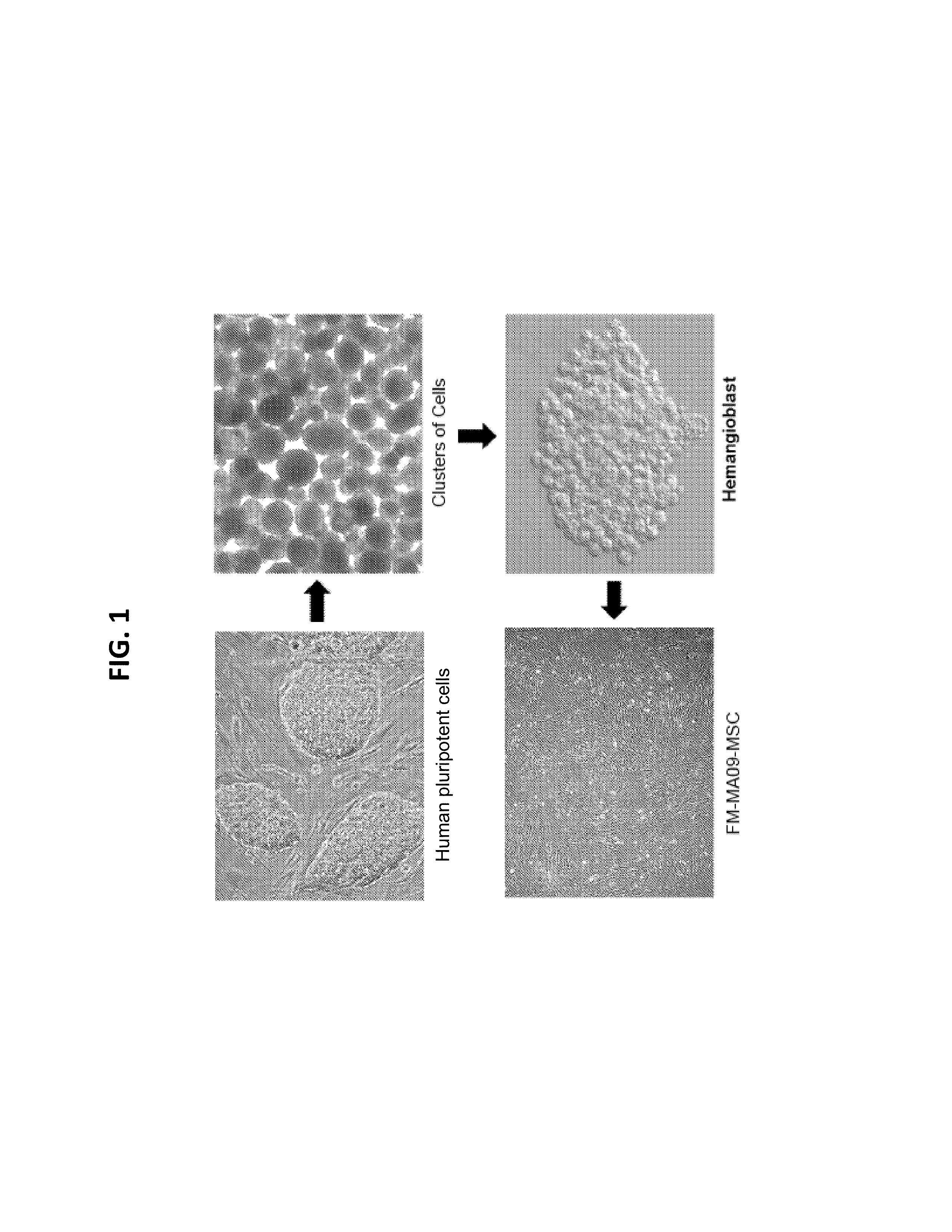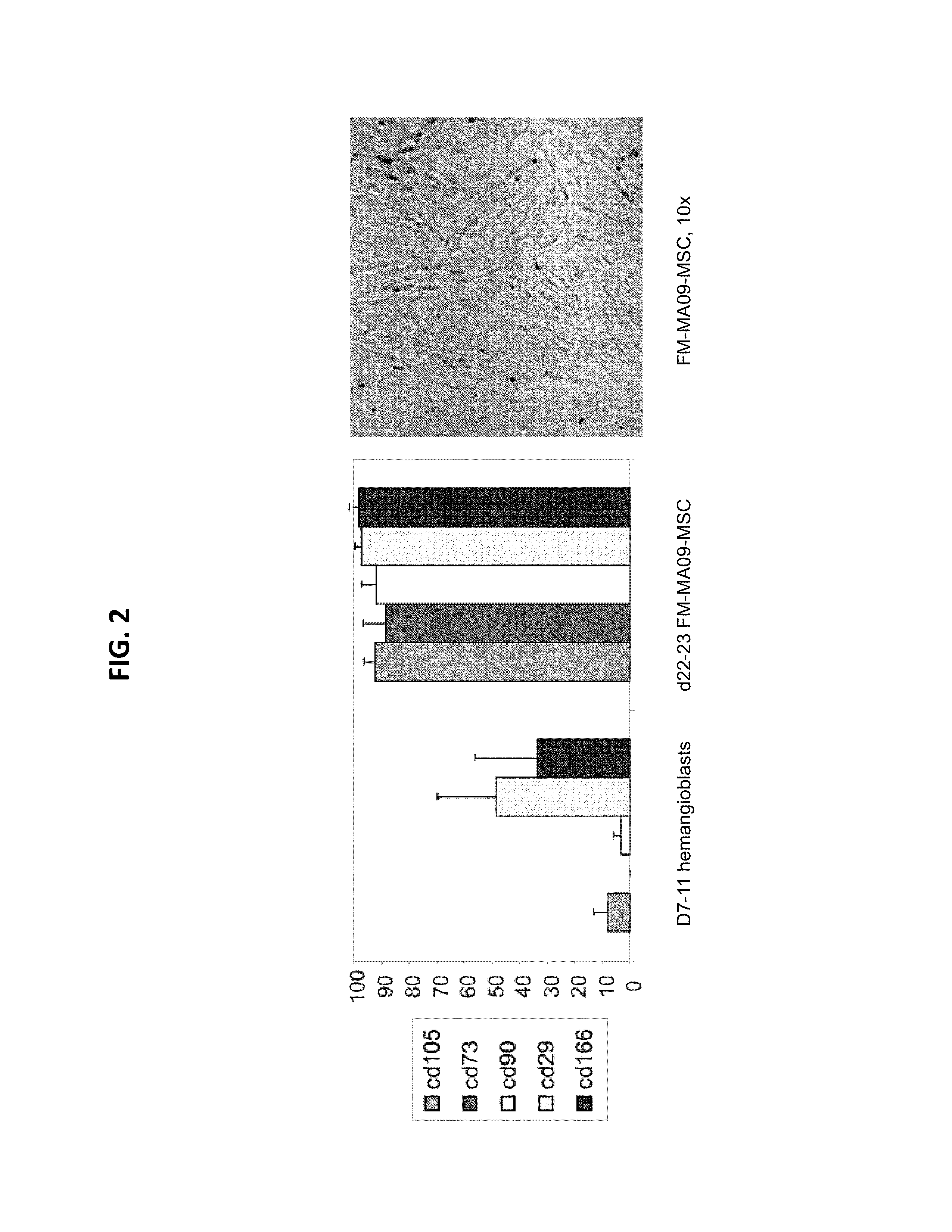Mesenchymal stromal cells and uses related thereto
a technology of mesenchymal stromal cells and stromal cells, which is applied in the field of cell-based therapies, can solve the problems of reverting to unwanted pathology, affecting so as to improve the effect of treatment effect, prolonging the effect of treatment time, and increasing the number of population
- Summary
- Abstract
- Description
- Claims
- Application Information
AI Technical Summary
Benefits of technology
Problems solved by technology
Method used
Image
Examples
example 1
Generating MSCs from Hemangioblasts
[0263]Hemangioblasts were generated from the clinical grade, single-blastomere derived ESC line, MA09 [16], as follows:
[0264]First, early-stage clusters of cells were generated from MA09 ESC cultured in serum-free medium supplemented with a combination of morphogens and early hematopoietic cytokines, specifically bone morphogenetic protein-4 (BMP-4), vascular endothelial growth factor (VEGF), basic fibroblast growth factor (bFGF), stem cell factor (SCF), thrombopoietin (Tpo) and fms-related tyrosine kinase 3 ligand (FL). More specifically, ESCs from one well of a 6-well tissue-culture treated plate were plated in one well of a six well ultra low adherence place (Corning) in 3 ml Stemline II medium (Sigma) supplemented with 50 ng / ml of VEGF and 50 ng / ml of BMP-4 (R & D) and incubated at 37° C. with 5% CO2. Clusters of cells were formed within the first 24 hr. After 40-48 hours, half of the medium (1.5 ml) was replaced with fresh Stemline II medium s...
example 2
Comparison of Differentiation of ESCs and MSC-Derived Hemangioblasts
[0271]This example describes comparison of the differentiation of ESCs into MSCs by two methods: either direct differentiation (in which ESCs were directly plated on gelatin or Matrigel) or the hemangioblast method (in which ESCs were first differentiated into hemangioblasts and then plated on Matrigel, as described in Example 1). Direct differentiation on gelatin gave rise to MSC-like cells, but the cells lacked CD105 expression, suggesting incomplete adoption of MSC fate (FIG. 3, left panel). When ESCs were plated directly on Matrigel, the resulting cells did express CD105 as expected for MSCs (FIG. 3, middle panel). However, compared to MSCs produced by the hemangioblast method, the directly differentiated MSCs cells grew in clumps, were more difficult to disperse when splitting, and did not generate nearly as many MSCs when starting from equivalent numbers of ESCs (FIG. 4).
[0272]MSCs differentiated directly from...
example 3
MSCs Derived from Hemangioblasts Differentiate into Other Cell Types
[0274]MSCs, by definition, should be able to give rise to adipocytes, osteocytes, and chondrocytes. Using standard methods, FIG. 7 shows the ability of hemangioblast-derived MSCs to differentiate into adipocytes and osteocytes, while FIG. 8 shows their potential to differentiate towards chondrocytes via the expression of chondrocyte-specific genes and FIG. 18 shows their potential to differentiate towards chondrocytes via safranin O staining of pellet mass cultures.
[0275]MSCs derived from hemangioblasts are expected to differentiate into adipocytes, osteocytes, and chondrocytes. These differentiation pathways may be examined using methods previously reported in the art. See Karlsson et al, Stem Cell Research 3: 39-50 (2009) (for differentiation of the hemangioblast-derived and direct ESC-derived MSCs into adipocytes and osteocytes). Particularly, FM-MA09-MSC display differentiation capabilities including the ability...
PUM
| Property | Measurement | Unit |
|---|---|---|
| Fraction | aaaaa | aaaaa |
| Fraction | aaaaa | aaaaa |
Abstract
Description
Claims
Application Information
 Login to View More
Login to View More - R&D
- Intellectual Property
- Life Sciences
- Materials
- Tech Scout
- Unparalleled Data Quality
- Higher Quality Content
- 60% Fewer Hallucinations
Browse by: Latest US Patents, China's latest patents, Technical Efficacy Thesaurus, Application Domain, Technology Topic, Popular Technical Reports.
© 2025 PatSnap. All rights reserved.Legal|Privacy policy|Modern Slavery Act Transparency Statement|Sitemap|About US| Contact US: help@patsnap.com



